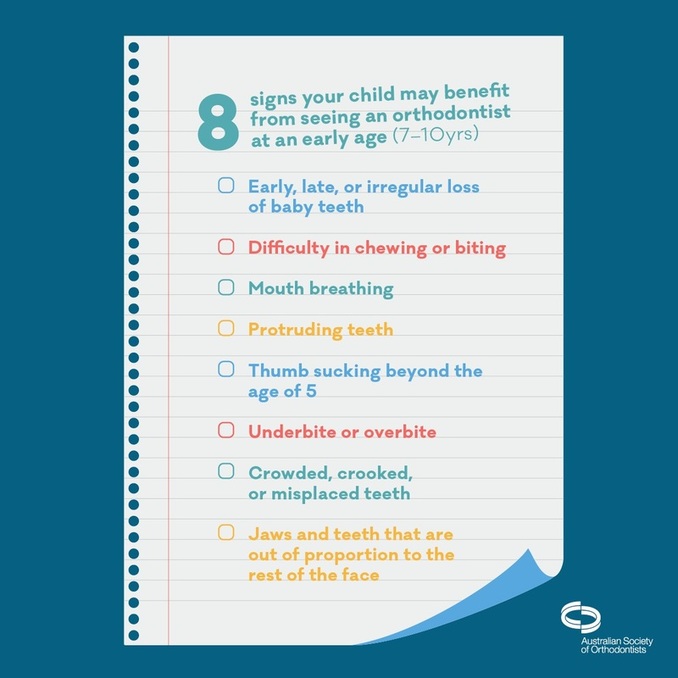Parents usually have many questions about orthodontic treatment for their children. The Australian Society of Orthodontists recommends that children between the ages of 7 to 10 years visit a registered specialist orthodontist for an assessment.
This allows the orthodontist to evaluate your child’s existing and incoming teeth and determine whether or not early treatment might be necessary.
Typically the first permanent molars are present in the mouth, giving your orthodontist an opportunity to check for a developing malocclusion, also known as a ‘bad bite’. Incisors have also usually begun to come in and problems such as crowding, deep bites, crossbites and open bites can be detected.
Although treatment usually will not begin until one to five years after the initial evaluation, it is still helpful in determining whether your child has any problems with the jaw and teeth early, when they may well be easier to treat. Depending on the child’s problem/s, earlier treatment may sometimes be financially beneficial to correct a potential problem than delayed treatment. For some children, early treatment can prevent physical trauma to the protruding front teeth and reduce emotional distress if teasing is occurring. Crossbite can prevent good bite formation.
Early orthodontic treatment, also known as ‘Phase One’, aims to correct more serious bite related problems as well as guide the jaw’s growth pattern. Early upper jaw expansion treatment due to a constricted ‘V-shaped’ upper jaw helps to make extra room in the mouth for the permanent teeth to be properly placed as they come in.
There are several signs that can help you determine whether your child may need early orthodontic treatment. If you observe any of these characteristics or behaviours, you should see an assessment from a specialist orthodontist:

- Early loss of baby teeth (before age 5 years)
- If your child’s teeth do not meet properly at all when biting. Biting or chewing difficulties.
- Mouth breathing and/or snoring
- Protruding front teeth, overjet
- If your child is older than 5 years and still sucks a thumb or finger.
- Underbite or overbite
- If your child’s front teeth are crowded (you generally won’t see this until the child is about 7 or 8 years old)
- If your child’s jaw shifts when he or she opens or closes the mouth
Early orthodontic treatment begins while a child’s jaw bones are still soft. They do not harden until children reach their mid to late teens. As the bones are still pliable, corrective procedures work faster and more effectively than they do for teens and adults. Appropriate early treatment in the suitable child is an effective interceptive measure that lays the foundation for a healthy and well-functioning mouth in teens and adulthood.
If you think your child needs or would benefit from early orthodontic treatment, only a specialist orthodontist has the training, experience and expert knowledge to determine the most appropriate treatment options and the best time to start treatment. When you see a specialist orthodontist you can be confident that your child is in the best hands.